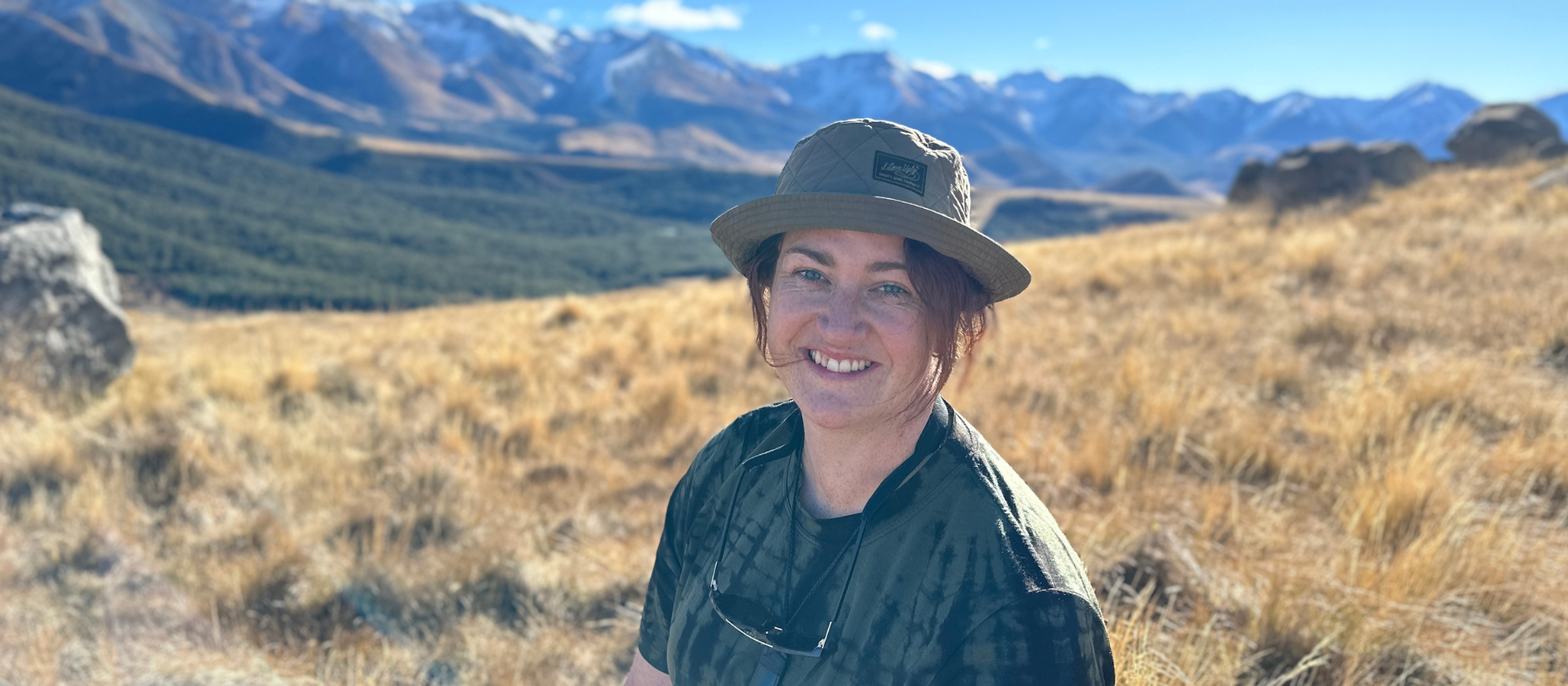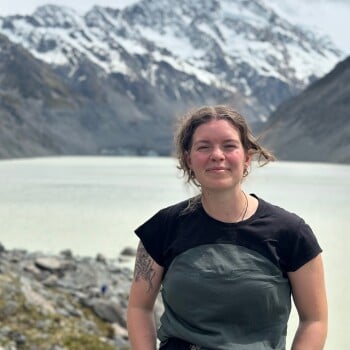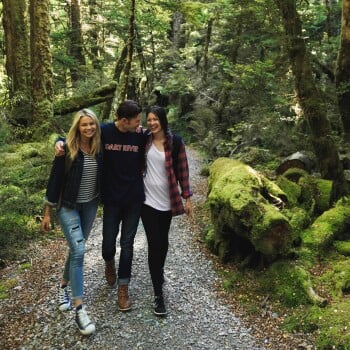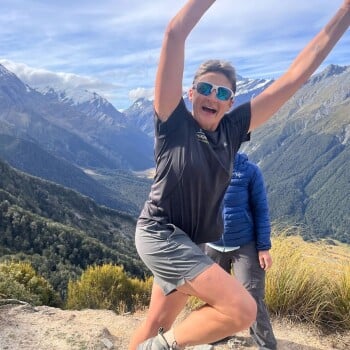- About Us
-
Trips
-
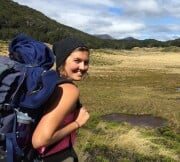 Kiwi-Style Hiking
Kiwi-Style Hiking
-
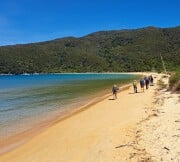 Great Walks
Great Walks
-
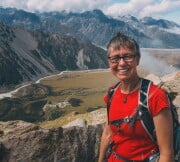 Hiking Tours
Hiking Tours
-
Alpine Hikes
-
Custom Groups
- Huayhuash Trek
- Family Northern Explorer
- Family Southern Explorer
- Lake Waikaremoana Hike
- Women's Custom Tours
- Women's Southern Wilderness
- Coast, Canyons and Mountains
- Coastal Wanderer Custom Tour
- Don't Cross the Ladies
- Secret South Custom Tour
- Tekapo Hike
- West Coast Custom Tour
- World Heritage Custom Tour
-
- Blog
- Shortlist
- About Us
- Trips
- Blog
- Shortlist

May 13, 2025
As we approached the end of another very busy hiking season, Anna Morris Sales and Tour Manager at Hiking New Zealand, had the opportunity to join a North Island Grand Hikes (formerly called the Northern Portion) trip and explore our fascinating and awe-inspiring North Island - Te-Ika-a-Māui.
I grew up in the South Island and have spent a lot of time exploring the South Island backcountry, but I studied our amazing volcanic region at university and had visited the North Island a few times but I hadn’t really experienced the region up-close. It was time to bring my textbooks to life!
I wanted to experience our trip like our guests do, so I pulled out the trip packing list and following it closely, I packed up my bag, kissed my children goodbye and left Christchurch to fly up to Auckland. I had a quick catch up with the lovely group guide, Kelsi, before a very early start. We met our very excited group in central Auckland and immediately got on the road. We had hikes to take!
Waitomo Caves: go with the glow
Our first stop was Waitomo where, after a short walk through beautiful rainforest to stretch our legs, we headed deep underground to experience the spectacular caves and glowworms with a fantastic local guide who shared his knowledge of the region’s history, the fascinating caves and as it turns out, fascinating glowworms – their life is far more interesting than merely lighting the way inside the caves. Waitomo Caves was one of New Zealand’s first tourist attractions and has been welcoming visitors for more than 130 years.
After we emerged into the sun and sat down for lunch, we got to know one another a little better. Our hiking group came from all walks of life, were of different ages and different countries. We were in for a wonderful trip! After a lovely hike of a local loop trail which gave us a view of the Waitomo caves rock formations above ground, we headed South and arrived in Rotorua, and given that it is an extremely active geothermal region, has a rather distinctive smell which I got used to very quickly!
We got to enjoy the beautiful cultural experience at Te Puia, with a meal cooked in a hāngi pit, and a magical cultural performance from the team. It was a busy first day that had me absolutely fizzing for more!
The next morning, we took yet another beautiful walk through the Redwoods Trail and enjoyed the magnificent forest, filled with towering podocarps. I even heard the illusive kākā, a large parrot that likes to hide in the forest canopy. Kelsi talked to the group about our silent forests which, while they should be teeming with bird-life, are often quiet due to predation from introduced species. We discussed the fantastic work that many people are doing to manage introduced predators and the gradual return of our precious birds (my illusive kākā included) to our beautiful forests.

Lakes, Legends and Connections
Another early start took us to Lake Tarawera, somewhere I’ve always had a deep interest in visiting, not only for the geological history, but it is also an area famous for Māori pūrākau (legends and stories). We hiked through lush native forest topped with mānuka trees, and emerged into the sun onto the shore of Lake Tarawera. Over a delicious lunch, we learned from Kelsi about the geologic and cultural history of the area. In 1886, nearby Mt Tarawera violently erupted, causing the destruction of Te Wairoa, now known as the "Buried Village," from where only a few survivors managing to escape the deluge of mud caused by the eruption.
The powerful eruption also caused the disappearance of the Pink and White Terraces, which at the time were considered the “Eighth Wonder of the World.” They are now submerged under Lake Rotomahana, just on the other side of Lake Tarawera.
After lunch, some of the group, myself included took a swim in Lake Tarawera, which was a great way to cool off before we jumped in the water taxi, the skipper’s tūpuna (ancestors) had also been tour guides on Lake Tarawera up until the time of the eruption. It was very easy to understand why the people who live in the area have such a deep connection with their land.
Before arriving in Taupō, we stopped off at Huka Falls, where New Zealand’s longest river, the mighty Waikato narrows dramatically, creating spectacular waterfalls. They were so loud, I could hear them long before I could even see them.
By our third day, the excitement was really building within the group as we were heading to Tongariro National Park. New Zealand’s first National Park, is home to the world famous Tongariro Alpine Crossing. You’ve probably seen it on any list of the world’s best day hikes. But it’s not the only enjoyable hike in the National Park. We took a beautiful walk around Lake Rotopounamu, a deep green lake, surrounded by the most luscious forest, and a little bit of rain.
Tongariro Alpine Crossing - One of NZ’s Best Day Hikes
The day had come. It was time to walk the Tongariro Alpine Crossing. I woke early to drizzle and dreariness, oh no, it was going to be a miserable day. I was very wrong. As we drove closer to the start of the track, we moved away from the mist, and as the sun came up, a crisp, blue-bird morning was revealed. We departed from the track carpark and headed up the valley into the midst of the volcanic region, looked down on by Mt Ngāuruhoe (famously, Mt Doom, in the Lord of the Rings films) and Mt Tongariro, with Mt Ruapehu off in the distance behind us. The lava field and volcanic environment was awe-inspiring. The power of previous volcanic activity could be seen in every direction. My textbooks were interesting, but it was nothing compared to being in it, even being able to reach out and touch it.
Time to Climb
We took a brief stop at Soda Springs, and as the sun climbed up over the mountains, so too did we, start climbing. The track, while very well maintained and easy to follow, is steep, but made more accessible with steps built into the track. Our group was in excellent spirits, and with the sweat beginning to break across our foreheads, the climb became more intense but the views, comradery and the promise of a rest kept us going. At the peak of the crossing, we were blessed with spectacular views in every direction, down into the other-worldly Red Crater, and turning around, we could admire our hard work, seeing the track we’d walked. I found the height a little unnerving (my motherly instincts kicked in, and I had the somewhat disconcerting thought that everyone around me was standing far too close to the edge, even though they absolutely weren’t). Our group found my reaction rather funny, and it was.
Then came the fun part – a highlight for a lot of the people in our group, we started our descent down the loose, volcanic scree. I’m not ashamed to admit that I slipped a few times, but it all added to the fun and excitement of the hike. I’m famously clumsy, so I was expecting and even prepared for the inevitable tumbles. We stopped for a well-earned lunch overlooking the Blue Lake, where the cloud built up and came and went, but it only added to the spectacular scenery.

Down, and down and down…
I was told the descent was a long one. How long could it be? Long. Really long. But we were rewarded with cooler weather and the enjoyment of the ever-changing scenery as we descended from volcanic highlands, into tussock country, low-country bush and down into native forest, with towering trees and welcoming bird-life ushering us to the end of our hike. We passed through a section which had in previous years been the path of a lahar, where volcanic debris had broken through its natural dam, rushing down the valley, causing significant damage in its wake. It is still a hazardous area, so we followed the no-stopping instructions on the signs and continued on. Lahars are still considered a significant hazard, as the area is still very much volcanically active.
The Conquered Crossing
We emerged into the carpark, celebrated our epic 20km adventure and took our weary bodies back to our accommodation where we had a well-earned dinner and chat, laughing and reminiscing about our day. One of our group, a very experienced traveller, hiker and mountaineer told us it was the best hike he’d ever taken. One person asked me if I’d do it again. After a moment’s thought (where my calves reminded me they’d had a very long day), I said, “Maybe not tomorrow, but yes, certainly.”
It was a magnificent hike. Looking back on it now, the Tongariro Alpine Crossing was one of the most rewarding hikes I’ve ever walked, with many challenges, triumphs and laughs in a place of such astounding and powerful splendour. I would consider myself very lucky to be able to stand in the presence of such beauty again.
And so, with one last drive, we ended our trip in Wellington, our political and cultural capital, we hugged, shook hands and waved goodbye to our travelling companions and carried on home. What a fantastic trip, made all the better with our amazing, smart, funny, patient and kind guide, Kesli and the company of our wonderful hikers. I really do love my job - Hiking New Zealand is the best guided hiking tour company in New Zealand!


